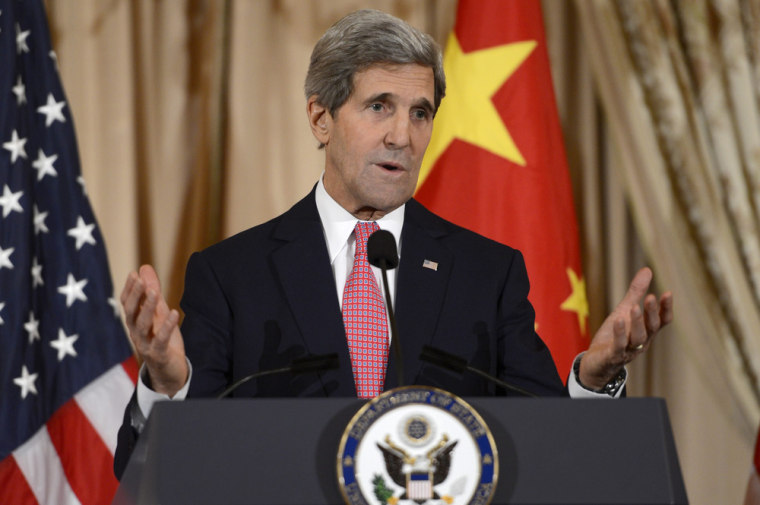Secretary of State John Kerry strongly criticized a controversial air defense identification zone announced by China on Saturday that includes a chain of disputed islands claimed by both China and Japan.
“The United States is deeply concerned about China's announcement that they've established an 'East China Sea Air Defense Identification Zone,'" Kerry said in a statement on Saturday.
“We have urged China to exercise caution and restraint, and we are consulting with Japan and other affected parties, throughout the region,” Kerry said.
The Chinese Defense Ministry issued a map on Saturday and an announcement of aircraft identification rules for the zone covering most of the East China Sea including the disputed islets, known as Diaoyu in China and Senkaku in Japan. According to the ministry’s website, aircrafts flying over the space defined by the zone must comply with identification measures and instructions from Beijing or could face “defensive emergency measures” from China’s armed forces.
The Chinese Ministry of National Defense’s website said the zone was established “to timely identify, monitor, control and react” to aircraft entering the zone.
"This is a necessary measure taken by China in exercising its self-defense right," Chinese Defense Ministry spokesman Yang Yujun said according to a statement posted on the website. "It is not directed against any specific country or target. It does not affect the freedom of over-flight in the related airspace."
International reaction against the zone has been swift between Kerry’s criticisms and protests in Tokyo.
"By establishing the air-defense zone Beijing has ... potentially escalated the danger of accidental collisions between the Chinese military and the U.S. and Japanese counterparts," Tomohiko Taniguchi, a counselor in the office of Japanese Prime Minister Shinzo Abe told The Associated Press. "It poses a serious challenge against freedom of movement in the sky and in the seas."
Kerry said in the statement that the U.S. does not support any effort on China’s part to apply the new regulations to foreign aircraft not intending to enter its national airspace.
“We urge China not to implement its threat to take action against aircraft that do not identify themselves or obey orders from Beijing,” he said, warning of increased tensions in the region and risk of accident that could result from the zone.
“Freedom of over-flight and other internationally lawful uses of sea and airspace are essential to prosperity, stability, and security in the Pacific,” Kerry said.
The Associated Press contributed to this report.
